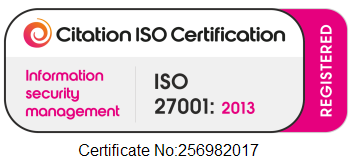Any employer will know that the recruitment process can be far from straightforward and can often take up considerable company time and money.
Even once you’ve managed to recruit the perfect candidates for your business, staff turnover rates may put you back at square one in no time at all. On average, it takes around 28 days to hire an employee, and this time is essentially wasted they then leave soon after they’ve been handed the job. So, businesses need to find a way to lower staff turnover to reduce these constraints. And the best way to ensure this is by implementing an employee retention strategy for your business.
What is an employee retention strategy?
An employee retention strategy is a plan focussed on minimising staff turnover, so you recruit employees who will maintain their role in your business. Employees need more than just good pay and annual holiday allowance to make them want to stay. Employee retention strategies make sure that employees feel motivated to stay in the workplace by implementing actions that truly benefit them. This could include additional training for staff or improved benefits packages.
An employee retention strategy can also guide the recruitment process, so workplaces can hire the correct candidates the first time around to reduce any trial-and-error process. To put it simply, employee retention strategies will save your business time and money and will ensure that staff are there to stay long-term.
Implementing an employee retention strategy
When implementing an employee retention strategy, it’s best to focus on the areas of your business that are significant in an employee’s decision to leave their job. If you notice a pattern emerging with your staff turnover, i.e., the last couple of employees have left because they felt they weren’t progressing, then you know which areas need fixing to stop this pattern from continuing.
It’s also a good idea to look at your recruitment process so that new candidates are a better fit for your company. Are you asking candidates the right questions? Are you giving a clear representation of the business and what work life is like? You want to ensure that you and the candidate are both on the same page before you offer them the job.
Let’s look at what makes a good employee retention strategy:
Psychometric Questionnaires
Psychometric questionnaires paint a picture of a candidate’s personality, allowing recruiters to quickly see how a candidate may perform. Modern psychometric questionnaires have been tested to ensure that measures are valid and relevant to personality traits that will affect workplace behaviour. Understanding how candidates will perform in a workplace can help foresee if they’d be a good fit for the job. As part of your employee retention strategy, you should make clear what kinds of personality would work well in your business. Then you can use the results of psychometric questionnaires to shortlist candidates. This is also useful to eliminate any potential hiring bias.
Training and Staff Support
One reason that staff may leave a workplace is that they’re overwhelmed by the role tasked to carry out. More often than not, this is due to a lack of training and support. When staff can carry out their jobs to a high level, it makes them feel happy and confident in their work, and a happy staff member is a staff member who stays. As part of your employee retention strategy, you should ensure that staff are given full training and support, so they feel confident in the role that they’re doing. Many employers make the mistake of assuming that staff will be able to work things out for themselves or already have enough work experience to carry out the role. But each workplace is different, and all staff will need support at the beginning of their new role to carry out tasks correctly. You should make sure that training and support are informative, patient, and clear, so employees can learn as much as they can from it.
Recognition and Progression
Many people seek a new employer for a better salary or to move up the ranks. No one wants to be stuck at the same level for their entire working life. You need to make sure that high performing employees have the chance to progress within your business and that their hard work is recognised and rewarded by senior members of staff. Giving your employees options for progression will stop them from applying elsewhere, so you can keep high-performing members of staff in your team! This strategy also works to the benefit of the employer. Recognising hard work will motivate employees to put more effort into their jobs and create good relationships between bosses and colleagues. Rewarding their hard work could come in the form of a bonus, a pay rise or even a complimentary day off. Yes, these incentives may cost your company some money, but they will be worth it if you can minimise the costs of recruiting and training.
Blog written by Rebecca Clarke.
Sign up for our newsletter for more blogs.




Comments are closed